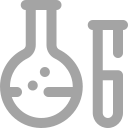
Product Description
The cells retain their mucoepidermoid characteristics in culture as determined by their ultrastructure and expression of multiple markers of squamous differentiation.The cells support the growth of hepatitis B virus and are negative for L-DOPA decarboxylase.The cells stain positive for keratin and vimentin and are mucicarmine positive but are negative for neurofilament triplet protein.

Information
ApplicationThe line has been selected as a prototype for transfecting human subgenomic fragments into human cells for studying the role of HBV and its individual genes in the pathogenesis of viral hepatitis and liver cancer.
TissueHuman lung
Morphologyepithelial
Growth Propertiesadherent
EffectsYes, in nude mice
tumors histologically resemble the original biopsy specimen and retain mucoepidermoid features.

Specifications
Complete Growth MediumRPMI-1640 (PM150110)+10% FBS (164210-500)+1% P/S (PB180120)
Subcultivation Ratio1:2-1:4
Medium Renewalevery 2 to 3 days
CryopreservationFreeze medium: 60% Basal medium+30% FBS+10% DMSO
Storage temperature: Liquid nitrogen vapor phase
Culture ConditionsAtmosphere: Air, 95%; CO2, 5%
Temperature: 37℃
TumorigenicYes
Gene Expressionkeratin; vimentin, The cells retain their mucoepidermoid characteristics in culture as determined by their ultrastructure and expression of multiple markers of squamous differentiation. TANK cells show reactivity with human alloantisera specific for the H
DurationThe line has been selected as a prototype for transfecting human subgenomic fragments into human cells for studying the role of HBV and its individual genes in the pathogenesis of viral hepatitis and liver cancer.

Misc Information
SubculturingRemove and discard culture medium. Briefly rinse the cell layer with DPBS solution to remove all traces of serum that contains trypsin inhibitor.
Add 1.0 to 2.0 mL of Trypsin-EDTA solution to flask and observe cells under an inverted microscope until cell layer is dispersed (usually within 2 to 3 minutes). Cells that are difficult to detach may be placed at 37°C to facilitate dispersal.
Add 4.0 to 6.0 mL of complete growth medium and aspirate cells by gently pipetting. Add appropriate aliquots of the cell suspension to new culture vessels.